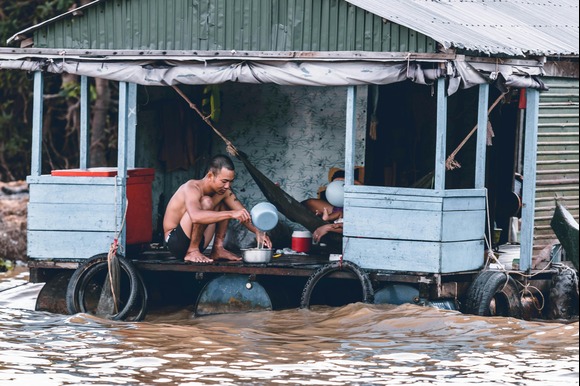At least four people have died and more than 1,300 residents have been evacuated as relentless, unseasonal rainfall continues to batter South Korea. Authorities have issued warnings that the extreme weather is likely to persist, heightening concerns across the country.
Among the deceased are two elderly men in their 80s, with officials stating that one of them appeared to have been trying to drain floodwater from the basement of his home at the time of his death. A third fatality occurred when a man was crushed by a collapsing wall while sitting in his car. Just moments earlier, he had reportedly called his wife to say that his vehicle was “being swept away.” The fourth victim is believed to have died from cardiac arrest during the storm.
“I couldn’t understand how something like this could happen,” said Kim Ha-min, a 26-year-old café owner in Gwangju, one of the affected cities. She noted that this is the first time she has witnessed rainfall of such intensity in her neighbourhood. Gwangju recorded 426mm of rain on Thursday alone, prompting Ms Kim to shut her café after it was flooded. “I drained the water, but the smell from the sewers is so bad that I can’t open for business,” she said.
In Seosan, located on South Korea’s west coast, more than 400mm of rain fell in just half a day. The Korea Meteorological Administration (KMA) described the deluge as a “once-in-a-century” weather event. As a result, the national government has raised the country’s weather-related disaster alert to its highest level.
Online posts from affected residents describe scenes of devastation. “Everything is covered by water except the roof [of my house],” wrote one user, highlighting the severity of the floods. Social media is awash with photos and videos showing cars and buildings submerged under muddy waters, with furniture and other debris floating freely.
The severe flooding has also led to numerous injuries. At least two people were reported to be suffering from hypothermia, while another two sustained leg injuries. Emergency services have responded to dozens of calls for help as the rain continues to cause chaos in urban and rural areas alike.
As of 16:00 local time (07:00 GMT) on Thursday, more than 1,300 individuals had been evacuated from their homes. Authorities have urged the public to avoid riverbanks, steep slopes, and underground spaces, citing an elevated risk of flash floods and landslides.
Meteorologists explained that the unusually intense rain was caused by a clash between dry air moving in from the northwest and hot, humid air from the south, which resulted in the formation of massive rain clouds. The KMA has warned that the storm system remains active and that dangerous weather conditions could continue in the coming days.
However, the agency also forecast that high temperatures are expected to return next week, raising the possibility of a heatwave following the floods. This rapid shift in weather patterns has added to concerns about the country’s ability to cope with increasingly unpredictable and extreme climate conditions.
With clean-up efforts only just beginning and rain still falling in many regions, South Korean officials are urging continued caution as they monitor the situation closely.






